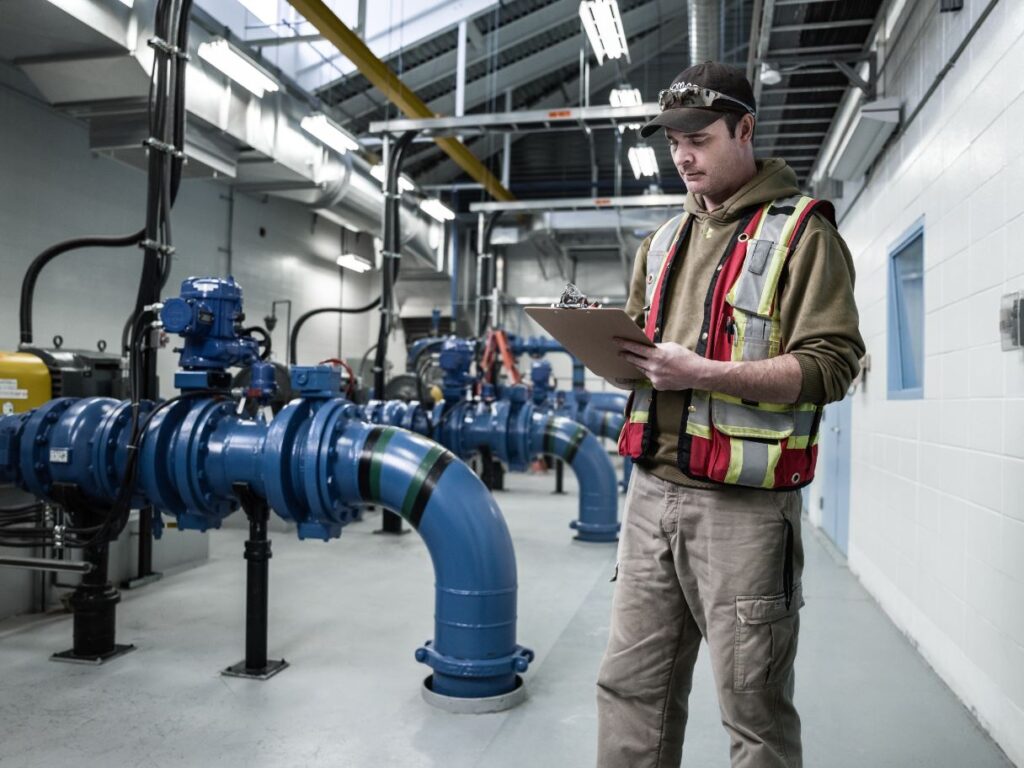Water System
Our Water System

Whitehorse’s first central water system was installed in an area of the downtown in 1943 by the US military out of concern for the health of its soldiers. With the development of new subdivisions in Hillcrest and Takhini, and later Riverdale, the system expanded.
The municipal water system is now available throughout all of Whitehorse’s urban neighbourhoods. Country residential areas are supplied by private wells, or by water delivery.
In Whitehorse, most people use groundwater. For buildings connected to the municipal water system, the water comes from the Riverdale Aquifer. Some people pump their own water from wells on their own property. Others have water delivered into a holding tank.
There are currently six wells supplying water. In 2015, just under 4.5 million cubic metres of water was pumped from the source.
Groundwater is pumped from the wells to the central Selkirk pumphouse in Riverdale. Here, Sodium Hypochlorite is created, the water is treated, then pumped for distribution. Water quality is monitored continuously at Selkirk Pumphouse and weekly at 25 locations throughout the system.
Treated water is pumped through a system of pumps and pipes that make up the distribution system. There are approximately 187 kilometres of water pipes in Whitehorse. A large pumphouse at Two Mile Hill maintains pressure so that water can be pumped to higher elevation neighbourhoods, and several smaller pumphouses also maintain pressure.
Pipes and pumps take away used water from homes and buildings, which comprises the sewer system. There are 144 kilometres of sewer lines in Whitehorse. Nine lift stations throughout the city keep wastewater and sewage moving towards the treatment plant, with a major lift station in Marwell and a flush tank.
Most sewage is treated at the Livingstone Trail Environmental Control Facility, built in 1996. There is also a minor lagoon serving Crestview. Two other lagoons, the Whitehorse Lagoon and Porter Creek Lagoon, are no longer in use.
Treated wastewater is discharged annually into either Pothole Lake, or the Yukon River. If it is discharged into the Yukon River, a public notification is required. Other treatment standards are outlined in the City’s water licenses.
A separate system of pipes carries stormwater away from our streets. Some stormwater pipes drain to low areas where the water percolates through the soil to groundwater, while others discharge into surface water that eventually flow into the Yukon River. As well, 19 storm water outfalls discharge directly into the Yukon River from Downtown, Marwell and a small area in Riverdale.
Because stormwater drains so quickly into natural water bodies, it is important to avoid contaminants such as chemical fertilizers, pesticides, detergents, and other household hazardous waste from entering the storm sewers.
About the Aquifer

In Whitehorse, most people use groundwater. For buildings connected to the municipal water system, the water comes from the Riverdale Aquifer. Some people pump their own water from wells on their own property. Others have water delivered into a holding tank.
There are currently six wells supplying water. In 2015, just under 4.5 million cubic metres of water was pumped from the source.
The Riverdale Aquifer was historically used to supplement Schwatka Lake water. It was added to warm up the lake water, and to make it clearer during spring melt. There are several drinking water wells that access the aquifer, as well as several testing and monitoring wells. The wells are located between 4 and 21 metres below ground surface level. The aquifer is overlain by sand and gravel and is called an unconfined aquifer because the rock cover can be permeated. The aquifer recharges mainly from the Yukon River.
For more information about Whitehorse’s groundwater and other interesting geological facts, visit Geoscape Whitehorse.
For many years, Schwatka Lake surface water was the primary drinking water source, which was mixed with groundwater from the Riverdale aquifer (also called the Selkirk aquifer). While the water quality was high, there were some risks to the water. They included wildlife feces, activities along Schwatka Lake, septics and development along Marsh Lake, and stormwater runoff.
The City began increasing its use of groundwater starting in 2005 for several reasons. The above risks were a factor, but also more rigorous treatment requirements for surface water would have driven up the capital and operational costs. Further, surface water has turbidity issues that groundwater doesn’t. Since 2010, the City has been using only groundwater.
